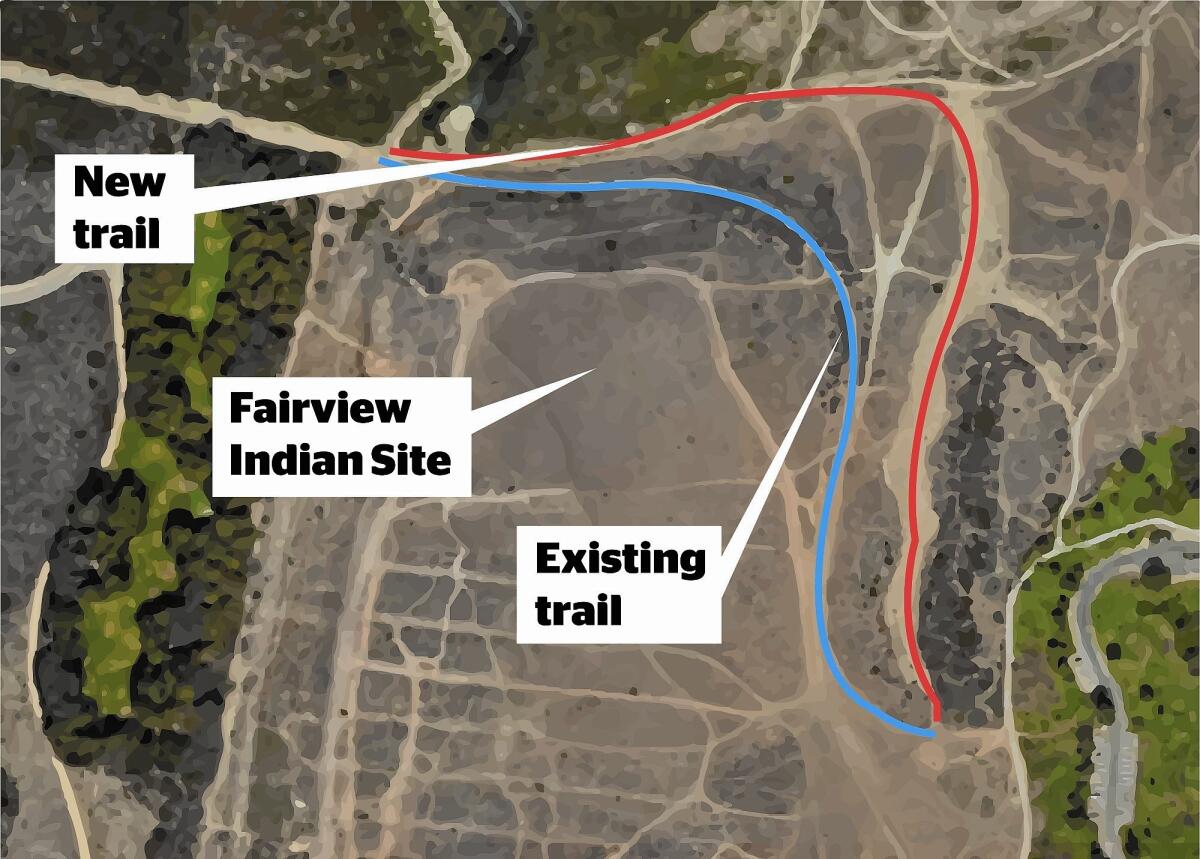Costa Mesa moves toward a new Fairview Park trail

In early 2013, Costa Mesa officials heralded the completion of a nearly 40-acre wetlands habitat created in Fairview Park.
The space, replete with ponds and streams that naturally filter urban runoff, has been well-received ever since — though one problem has stifled the roughly $5-million project since the beginning: Fairview’s hilly terrain and lack of parking near the habitat make it difficult for many to get there.
On Tuesday, the City Council took the first step toward ensuring that the Wetlands and Riparian Habitat, as it’s officially known, is more accessible to the handicapped.
On a 3 to 2 vote, with members Sandy Genis and Katrina Foley dissenting, the council agreed to build a new Americans with Disabilities Act-compliant, 8-foot-wide concrete trail.
“That is something that is very close to my heart and very important to me,” Councilman Gary Monahan said of making the path ADA accessible. “We want people to get to the ponds. That’s why they’re there.”
It would start near Fairview’s main parking lot off Placentia Avenue and then travel north to provide access to the wetlands and west into county-owned Talbert Regional Park.
The trail would replace another, built in 1988 of asphalt, that goes into Talbert but not the Wetlands and Riparian Habitat. Parks and Recreation commissioners recommended the trail last month.
City staff contends that the asphalt path is on an unstable bluff and that to stabilize it would require extensive excavation into the Fairview Indian Site, a noted archaeological remnant of a Native American village.
But adding concrete in Fairview was troublesome for Genis and Foley.
Genis said the project is not in accordance with Fairview Park’s master plan, which prioritizes improvement of existing trails over creating new ones. She also expressed concern about harming bird and riverine habitat in the canyon.
Foley said she sides with residents who favor keeping the park as natural as possible.
“We don’t need to overdevelop and cement everything and manicure everything,” she said. “Sometimes nature — and just the natural crevices and cracks and distortions — are beautiful.”
In response to Genis’ concerns about riverine habitat, Tony Bomkamp, a field botanist and wetlands ecologist who has extensively studied Fairview Park, said the canyon contains neither riverine habitat nor wetlands.
Since 2009, he noted, the canyon contains fill placed there during the construction of the Wetlands and Riparian Habitat.
*
Hamilton Street homes
The City Council gave preliminary approval for a six-home development in the Westside, at 592 Hamilton St., that would replace four apartments built in the 1950s. The plan next faces the city’s Planning Commission.
The developer is Nicholas Louis of Newport Beach-based N.A.L. Financial.
The two-story homes would range from 1,560 to 1,715 square feet and have either two or three bedrooms.
Mayor Pro Tem Jim Righeimer called the project “basically perfect ... beyond all of our dreams” for improving the Westside.
Mayor Steve Mensinger applauded N.A.L. Financial for wanting to create more ownership housing on Hamilton. He also apologized to Louis for critics who spoke out against the project because the developer is seeking three deviations from city development standards. These include designing a three-car garage that is 28 feet wide instead of the minimum 30 feet.
Foley, who liked the project but not Louis’ request for deviations, took exception to Mensinger’s comment
“I’m not going to apologize for the residents for speaking up,” she said. “I think that’s their right under the constitution of the United States.”
[For the record, Sept. 18, 5:10 p.m.: An earlier version of this post incorrectly reported the amount of apartments at 592 Hamilton St. as nine. There are four.]
